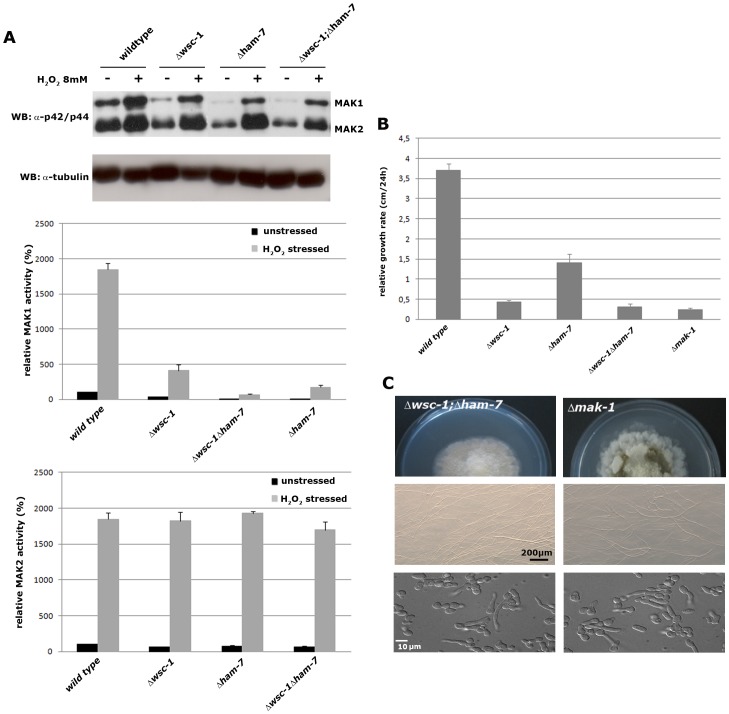Figure 5. Δwsc-1, Δham-7, and Δwsc-1;
Δ ham-7 are deficient in MAK-1 activation. (A) In the upper panel, extracts of non-stressed and oxidatively stressed wild type, Δwsc-1, Δham-7, and Δwsc-1; Δham-7 cells were prepared and assayed for the presence of phosphorylated MAK-1 and MAK-2 by a Western blot assay using antibody that specifically recognizes the phosphorylated proteins. Extracts from non-stressed and from stressed cells are denoted by – and +. The sizes of the MAK-1 and MAK-2 proteins are shown at the side of the Western blot. A Western blot against tubulin was used as a control and to calibrate the amounts of protein in each of the samples. The amounts of activated MAK-1 (middle panel) and MAK-2 (lower panel) in each of the samples relative to the amount of activated MAK-1 or MAK-2 in the non-stressed wild type cell are shown (n = 5). (B) The colony extension rates for wild type, Δwsc-1, Δham-7, Δwsc-1; Δham-7, and Δmak-1 are shown. (C) The colony morphology (upper panel), the lack of protoperithecia production (middle panel), and lack of CAT fusion (lower panel) are shown for Δwsc-1; Δham-7, and Δmak-1.

